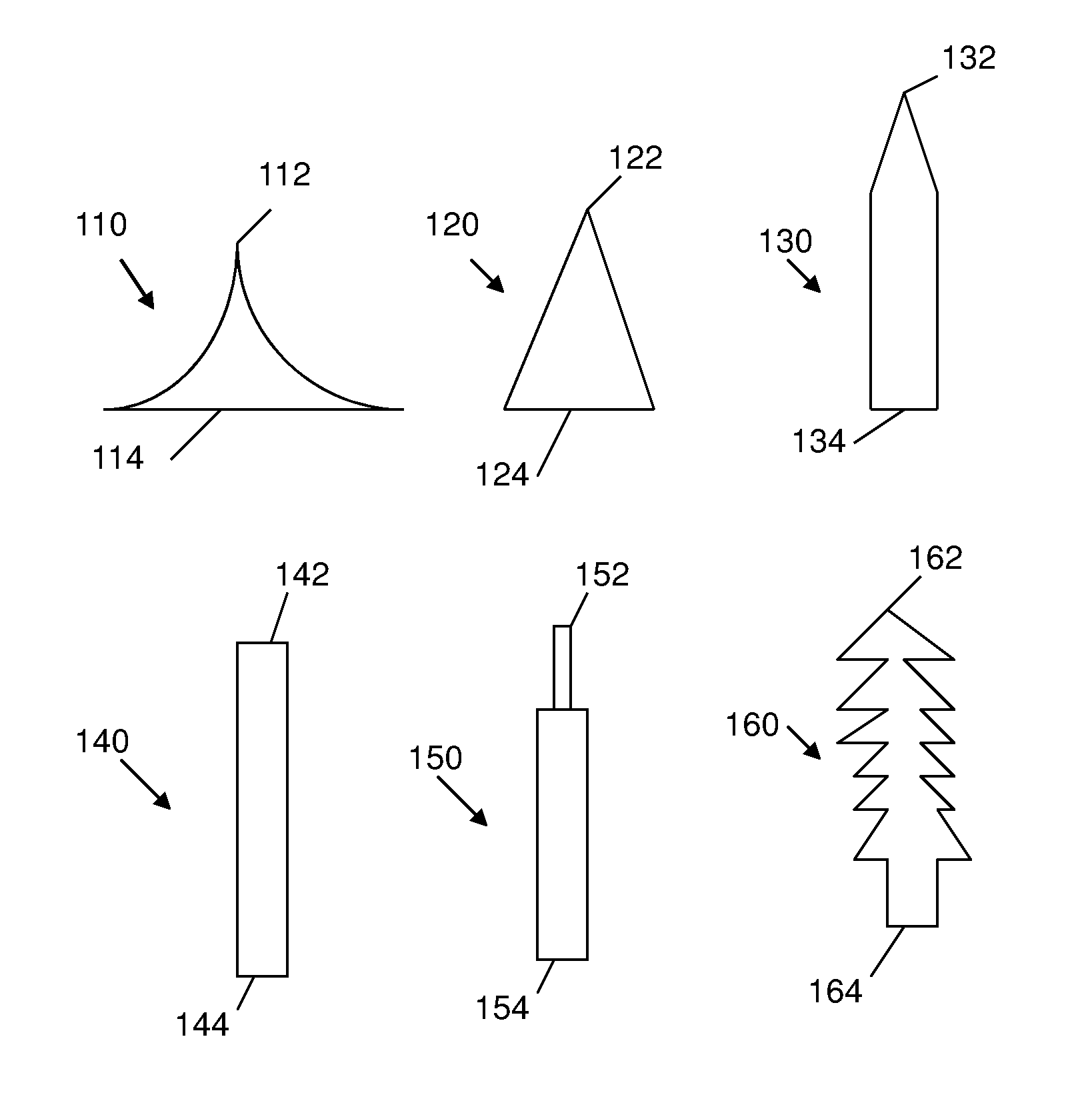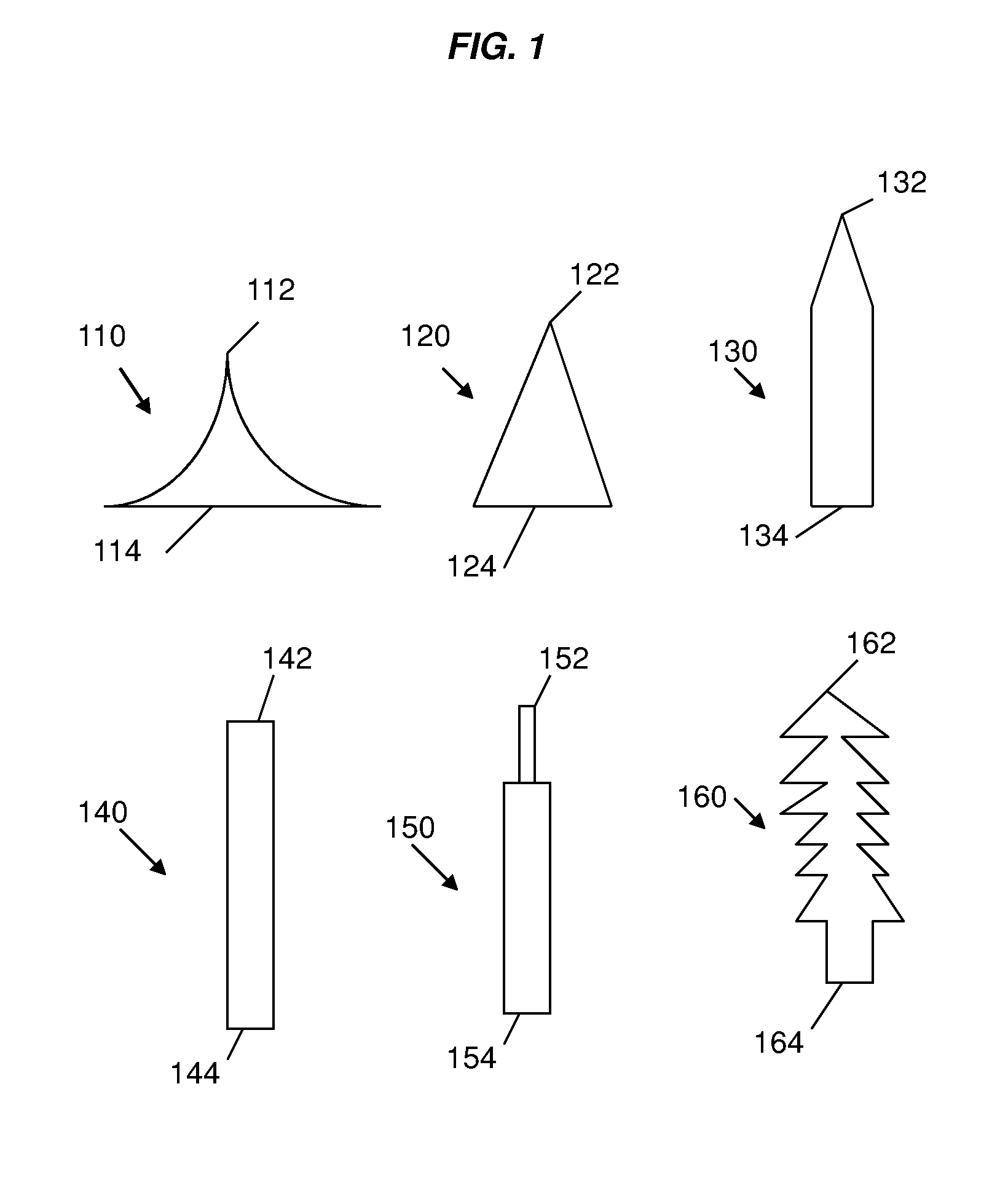Silk fibroin-based microneedles and methods of making the same
a microneedle and microneedle technology, applied in the field of microneedles and microneedle devices, can solve the problems of inability to precisely control, limited drug-loading capacity, reduced or inactivated drug activity during processing conditions, etc., and achieves the effects of reducing or inactivating drug activity, reducing or ineffectively reducing drug activity, and reducing drug-loading capacity
- Summary
- Abstract
- Description
- Claims
- Application Information
AI Technical Summary
Benefits of technology
Problems solved by technology
Method used
Image
Examples
example 1
An Exemplary Method of Microneedle Fabrication Using a Silicone Microneedle Molding Master
[0229]A scheme for the fabrication of an embodiment of the invention comprising silk fibroin microneedles is shown in FIGS. 3A-3K. (FIG. 3A) The substrate used for fabrication is a silicone (Si) wafer with a 200 nm thick low stress silicone nitride (Si3N4) layer; (FIG. 3B) The wafer is coated with 1 μm positive tone photoresist (S1813, Rohm & Haas); (FIG. 3C) Photolithography is performed, leaving circular photoresist patterns functioning as a mask for the subsequent etching step; (FIG. 3D) Anisotropic reactive ion etching (RIE) is performed with SF6 gas to etch the patterned Si3N4 film and expose the underlying Si material; (FIG. 3E) A timed isotropic wet etch is performed with a mixture of hydrofluoric-, nitric- and acetic acid (HNA) to undercut the Si3N4 mask; (FIG. 3F) A brief ultrasonic bath removes the residual Si3N4 circular mask and exposes the underlying Si microneedle molds; (FIG. 3G)...
example 2
Drug Loading, Silk Processing, and Drug Release Kinetics of Silk Film
[0231]FIG. 5 shows that agent release from silk fibroin-based films can be controlled via thickness, β-sheet content, and molecular weight. In one embodiment, increasing film thickness, increasing β-sheet content and increasing degumming time (corresponding to decreasing average molecular weight) all increase release duration and decrease average release rate. Thin, methanol-crosslinked silk films containing 0.25 mg of GFP per film, released 92.8%±7% of their total drug load within 24 hours, but this release rate could be altered easily to control the release behavior to the target application. FIG. 5 shows that methanol-treated silk films loaded with indigo dye exhibited slower release into chicken breast tissue than untreated films. As shown in FIG. 5, the untreated films (top) dissolved partially when brought into contact with tissue, while methanol-treated films (bottom) relied solely on diffusion.
[0232]Methano...
example 3
Another Exemplary Method of Microneedle Fabrication Using an Aluminum Microneedle Molding Master
[0233]FIGS. 7A-7F illustrates a schematic diagram of an exemplary process to fabricate silk microneedles according to one or more embodiments of the invention. The effectiveness of such technique is demonstrated by micromolding of silk fibroin microneedles at ambient pressure and temperature. The aqueous-derived silk fibroin microneedles can generally reproduce the Al molding master. In some embodiments, the aqueous-derived silk fibroin microneedles can be approximately 500 micrometers high, with tip radii of <10 micrometers. In some embodiments, the silk fibroin microneedles can be doped with at least one active agent. As shown in later Examples, some embodiments of the silk fibroin microneedles can be doped with the horseradish peroxidase (HRP) enzyme as a large molecule model drug. In other embodiments, the silk fibroin microneedles can be loaded with an antibiotic tetracycline. For th...
PUM
| Property | Measurement | Unit |
|---|---|---|
| Temperature | aaaaa | aaaaa |
| Fraction | aaaaa | aaaaa |
| Time | aaaaa | aaaaa |
Abstract
Description
Claims
Application Information
 Login to View More
Login to View More - R&D
- Intellectual Property
- Life Sciences
- Materials
- Tech Scout
- Unparalleled Data Quality
- Higher Quality Content
- 60% Fewer Hallucinations
Browse by: Latest US Patents, China's latest patents, Technical Efficacy Thesaurus, Application Domain, Technology Topic, Popular Technical Reports.
© 2025 PatSnap. All rights reserved.Legal|Privacy policy|Modern Slavery Act Transparency Statement|Sitemap|About US| Contact US: help@patsnap.com



